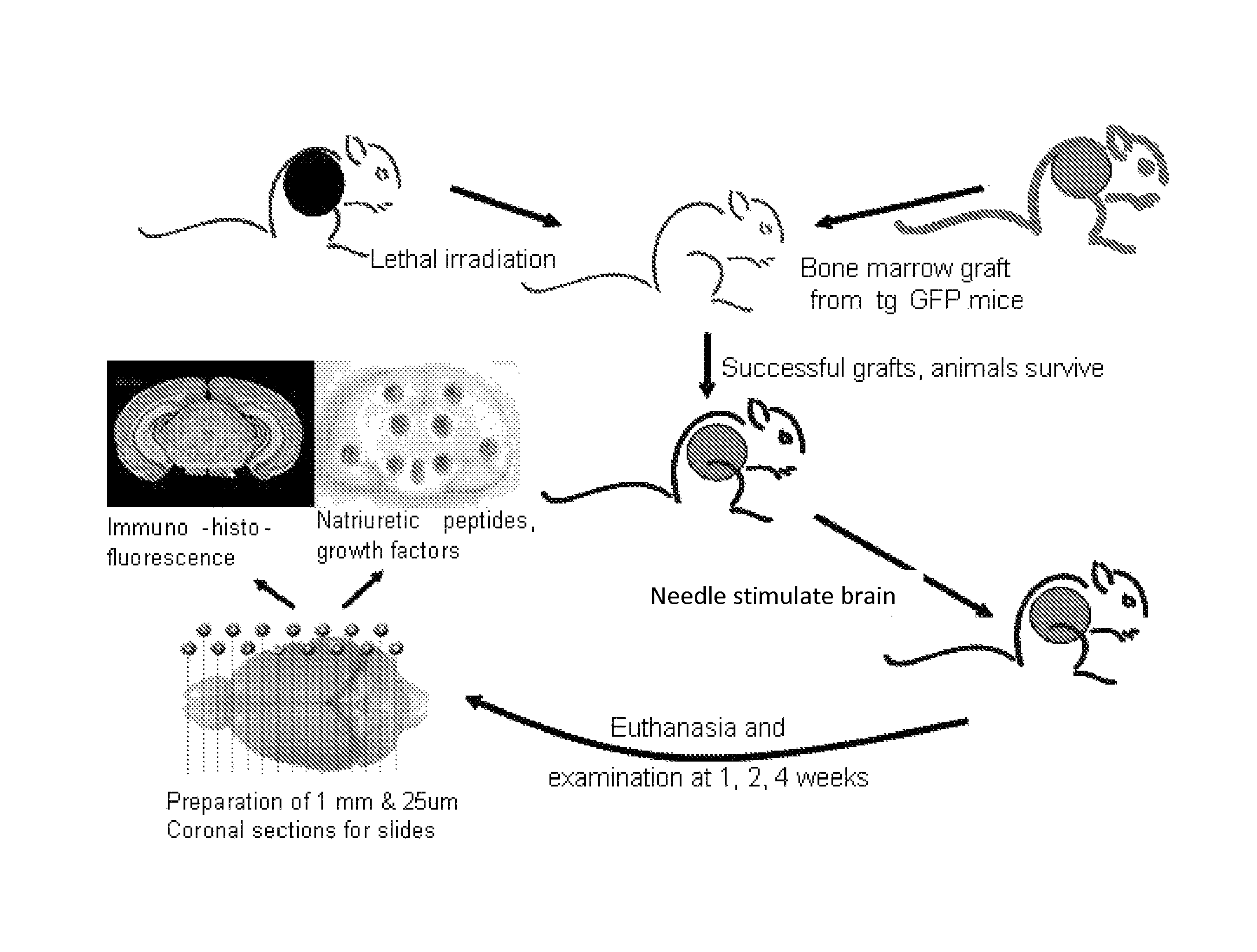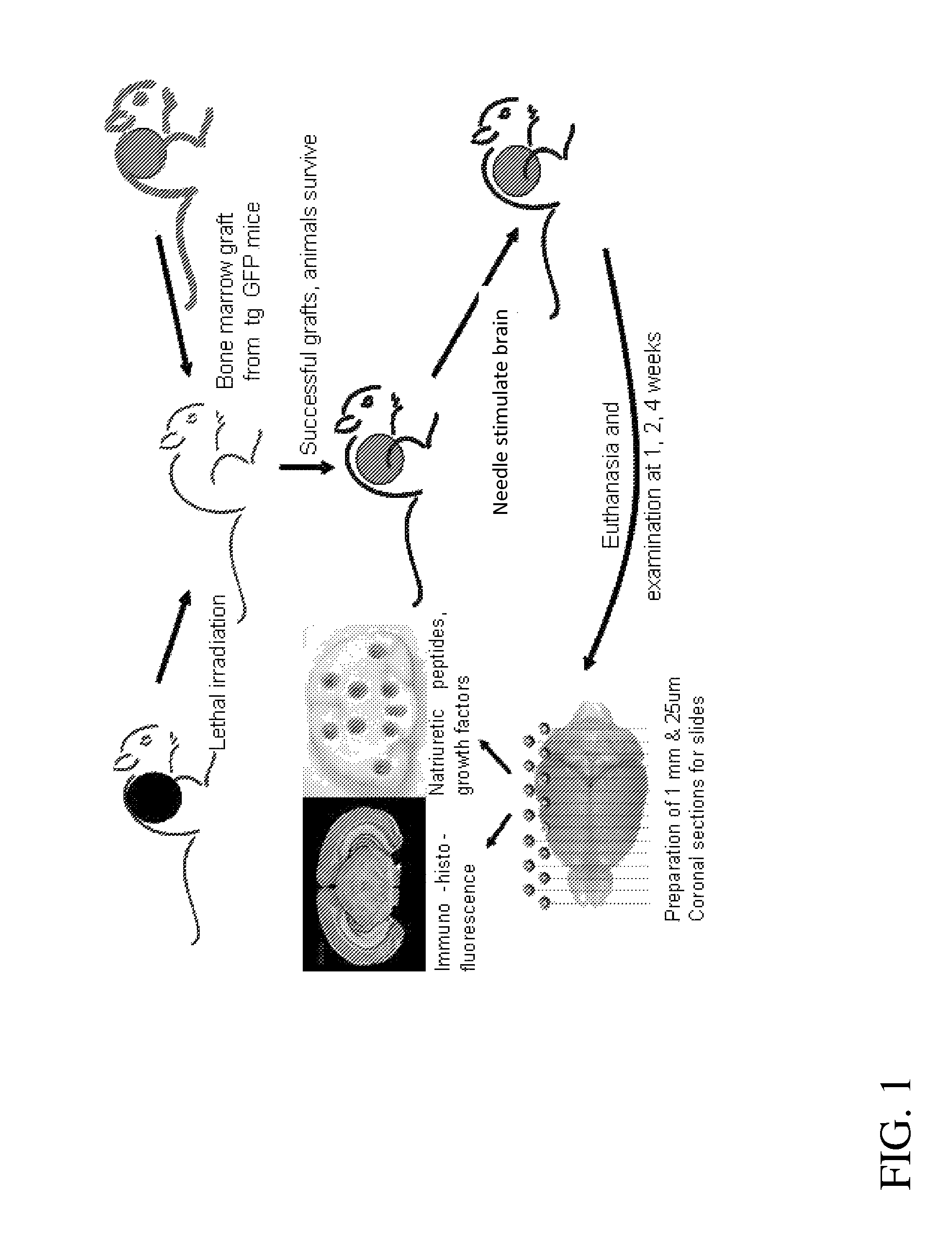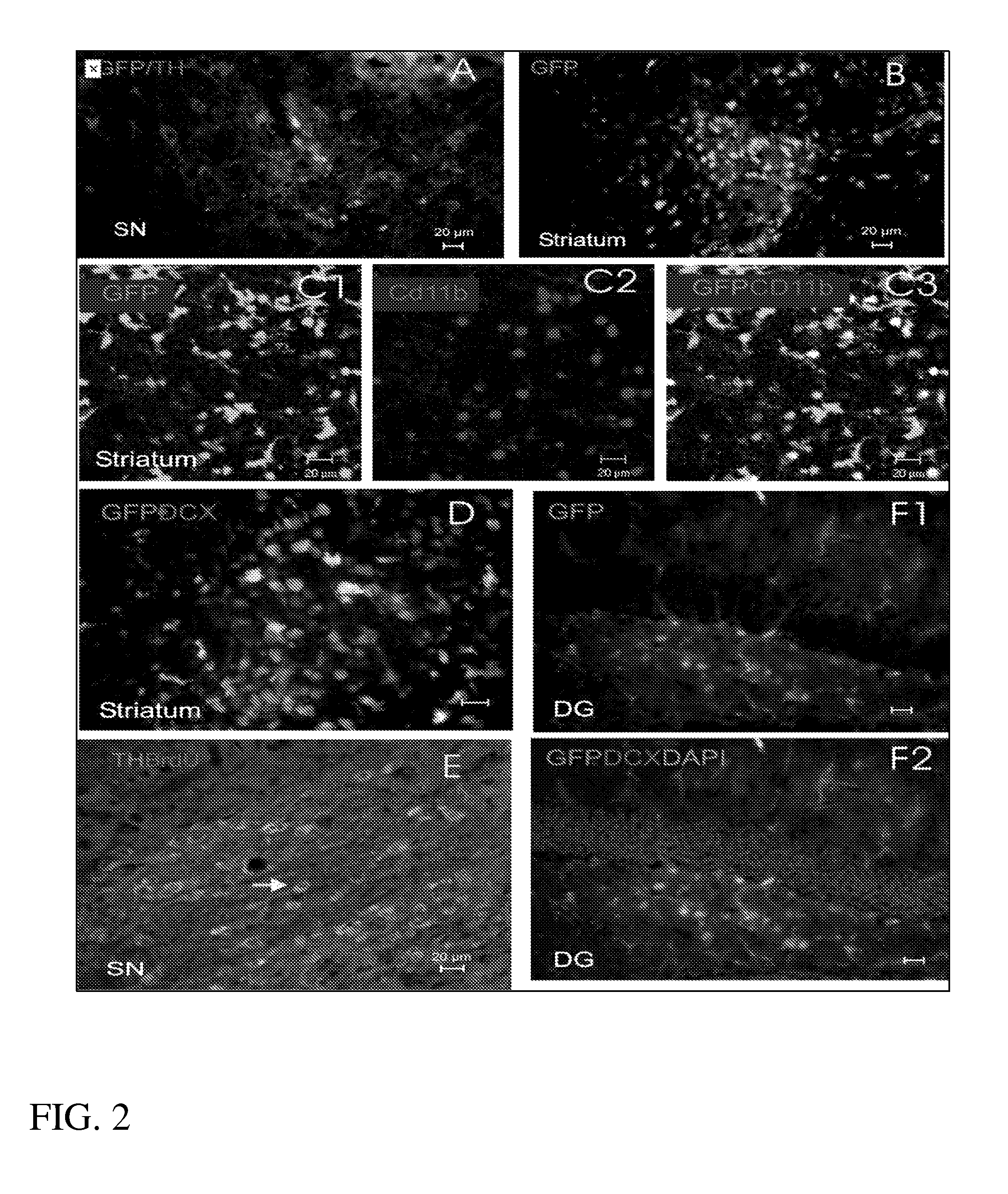Promotion of brain self-repair mechanisms by stereotaxic micro-stimulation
a stereotaxic micro-stimulation and brain technology, applied in the field of brain self-repair mechanisms, can solve the problems of impaired memory, thinking and behavior, impaired brain synaptic activity, and stiff joints
- Summary
- Abstract
- Description
- Claims
- Application Information
AI Technical Summary
Benefits of technology
Problems solved by technology
Method used
Image
Examples
example
Mobilization of GFP+ Cells from the Periphery in to the CNS Following Focal Micro-Lesions of Brain
[0073]A sterile micro-needle (200 microns maximum shaft diameter, similar to the acupuncture needle) was transiently inserted stereotaxically into four different sites: corpus striatum, dorsal hippocampus, cerebellum and ventral midbrain. Several of the mice underwent bromodeoxyuridine (BrdU) injections (100 mg / kg i.p.×2) on the day of transient insertion of the needle to label newly born cells. One, two and four weeks after making the micro-lesions, mice were euthanatized and their brains were processed for immunohistochemistry. GFP+ cells were readily visualized at the site of the micro-lesions in striatum, ventral midbrain and hippocampus (FIG. 2). The GFP+ cells could be found along the tract of the needle and extending beyond the locus of the lesion. In the striatal lesion (FIG. 2B, 2C) many of the GFP+ cells that had infiltrated the lesion from the peripheral circulation bore the m
PUM
 Login to view more
Login to view more Abstract
Description
Claims
Application Information
 Login to view more
Login to view more - R&D Engineer
- R&D Manager
- IP Professional
- Industry Leading Data Capabilities
- Powerful AI technology
- Patent DNA Extraction
Browse by: Latest US Patents, China's latest patents, Technical Efficacy Thesaurus, Application Domain, Technology Topic.
© 2024 PatSnap. All rights reserved.Legal|Privacy policy|Modern Slavery Act Transparency Statement|Sitemap



